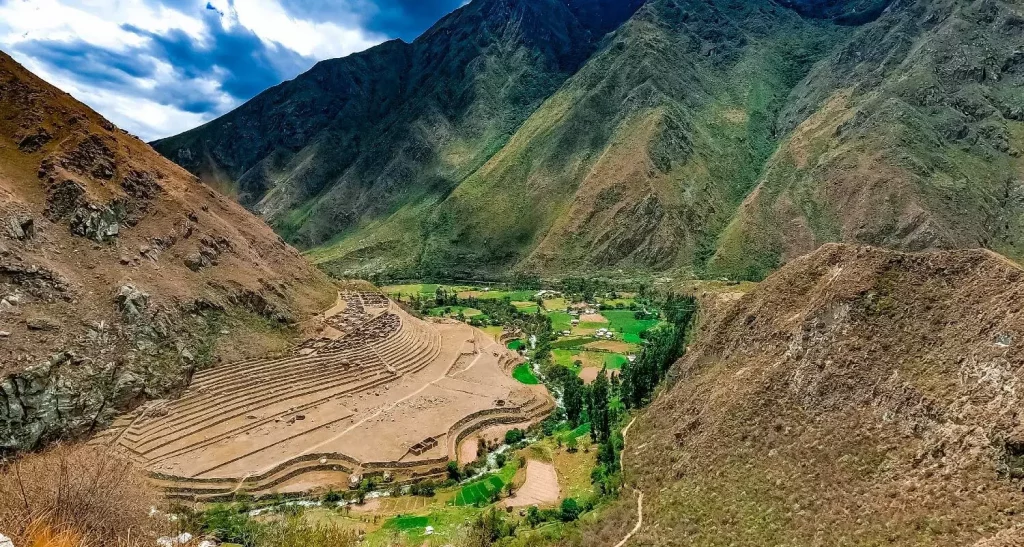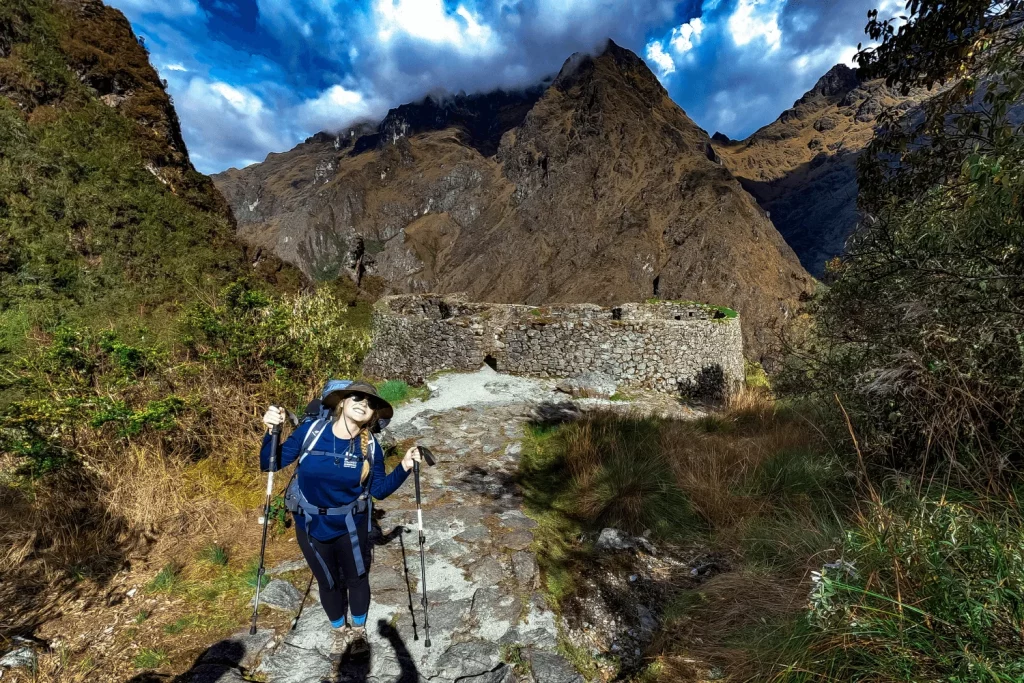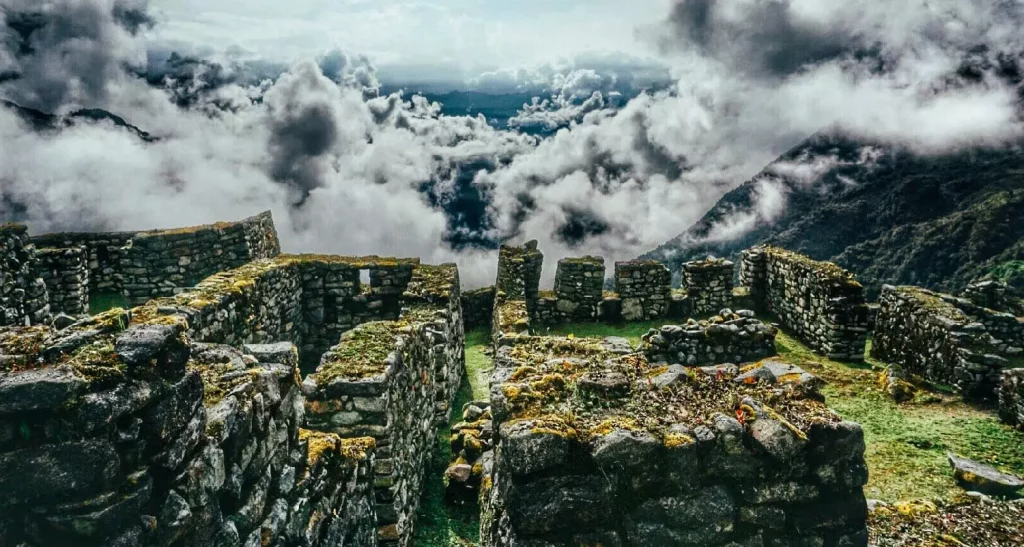The Inca Trail hike begins in the Sacred Valley at the trailhead of Piskakucho – KM 82. Hikers are welcomed into the trail by the friendly faces of the local inhabitants, most of who sell last-minute items such as coca leaves and snacks for the intrepid souls ready to take on the trail. From Piskakucho – KM 82 onwards, no cars or cargo animals are allowed. From this point onward, only hikers, porters, and guides proceed to hike along the Inca stone paths leading to Machu Picchu citadel.
The trail not only takes hikers along valleys and through mountain passes, but it also grants hikers access to the archaeological sites of Patallacta/Llactapata, Runkurakay, Sayacmarca, Phuyupatamarca, Inti Pata, Winay Wayna, and Intipunku. The Inca Trail leads directly to Machu Picchu and offers the hike of a lifetime.
Patallacta is the first archaeological complex along the classic Inca Trail. Located at 2,840 m.a.s.l., this site is thought to have been an agricultural and administrative support site to Machu Picchu. The most impressive feature of this archaeological site is its complex system of terraces dedicated to the cultivation of crops.
As the first stop along the Inca Trail, the Patallacta site serves as a welcome to visitors and sets the stage for even more formidable views of the surrounding landscapes and imposing Inca constructions.

The archaeological site of Runkurakay is known for its semicircular construction seemingly perched above the clouds. This complex is surrounded by thick vegetation and the towering mountain ranges that serve as the perfect backdrop. Based on its prominent location at 3,760 m.a.s.l., this site is thought to have served either as a resting place for travelers and pilgrims, or a control post. This site is a perfect stop along the Inca Trail hike where you can enjoy magnificent views of the Inca trail, and explore the exquisite variety of flora and fauna.
Visitors can enjoy views of the famous Dead Woman´s Pass (Warmi Wañusca Pass) and its mountain silhouette from Runkurakay as well. This pass is the highest location (4,200 m.a.s.l.) reached when hiking to Machu Picchu via the Inca Trail. Besides its altitude, this mountain pass offers travelers one of the most rewarding moments of the Machu Picchu hike. The altitude and geographic characteristics of the trail leading to the Dead Woman´s Pass create a strenuous hike for most hikers. This is often worsened by altitude sickness experienced due to altitude changes. However, all the efforts exerted by most hikers are then rewarded by the awe-inspiring views of the valleys below.

Sayacmarca rests at the top of a mountain at approximately 3,600 m.a.s.l. The visit to this archaeological site grants views of the Aobamba valley and the Pumasillo snow-capped mountain. The site´s structure is composed of maze-like paths and tightly organized enclosures. Its structures are all built on the edge of the precipice and have led experts to deduce that this location had ceremonial and astrological uses during the Inca empire.








INKA MOUNTAIN PERÚ - Copyright © 2021 - 2022, All Rights Reserved
Developed for CUSCOTECHNOLOGY
Powered by Go Andes Expeditions
Click on our representative to get started.
